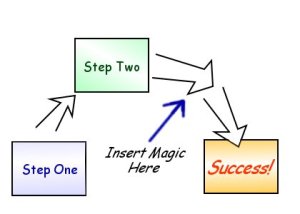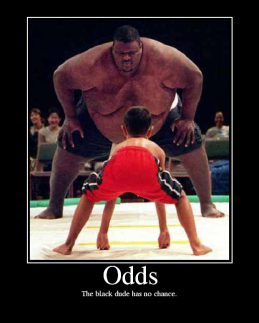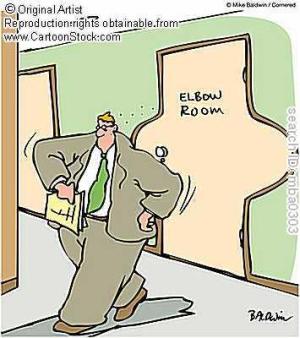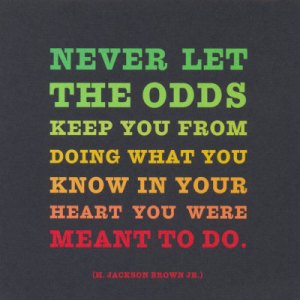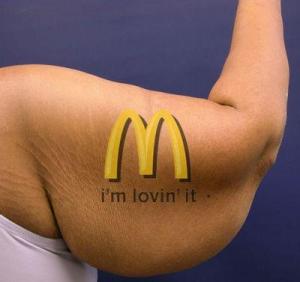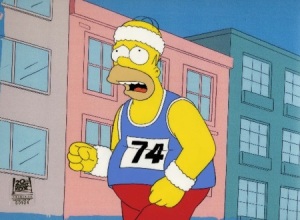Mohammed Ali Hobby No Pilates Tryna Keep The Ocean By Me- Nas
It’s finally 2011. After all of the lickity liquor laughter, midnight nookie and bangover hangovers, it’s time for no more bullshitting. It’s time to get serious! Or, is it?
Chances are most people, regardless of their resolutions, still feel the same way come January 1st, and well, rightfully so. To their credit, nothing has really changed except the date on their phone. Nonetheless, you do want to lose weight. That’s most definitely up there on the list of resolutions each and every year. But to lose that weight, you must be able to do just that….. WAIT!
What I’m trying to say is losing weight, in general, is not that difficult. Problem is, it isn’t going to happen overnight. That concept is an easy one to understand, but because of the easily marketed terms like “shaped, sculpted and toned” and “lose 20 pounds in 30 days,” terms like “muscle, lean body mass and lifting weights” get the bad apple. What I’m trying to say is achieving a desirable aesthetic appearance takes hard work, patience and an appreciation for appropriate, individualized, and more importantly, realistic goal setting.
It most certainly is, by any means, NO PILATES!
I’m not knocking Pilates at all. In all honesty, pilates doesn’t burn many calories. I guess “in theory” it’s better than nothing, but it still lacks one of the most important factors in any body transformation- intensity. If you want to be lean, look athletic or be able run, jump, swim or beat the shit out of a grizzly bear, you’re going to have to bust your ass, both inside and outside of the gym. Not to mention, Ancient Greeks didn’t have an express line, cardio kickboxing, zumba or 2.5 lb pink dumbbells. If we’re speaking purely from an evolution standpoint, we’ve failed miserably.
We’ve gone from…..
To…..
There’s nothing wrong with an occasional stroll on a bike, elliptical or treadmill. Problem is, this is the only thing most people, particularly females, tend to do. And if gyms didn’t have these machines in them, their membership numbers would severely drop. They need bodies in the door. They need people to sign up and not come. But, truth is, most gyms would create raving fans with guaranteed results with simply an empty space with a few barbells, dumbbells, benches, kettlebells, med balls, various bands and other kinda cool top secret stuff. Once again, back to the Ancient Greeks, they’d laugh at our gyms today.
Now, in order to change the way you look, you need to find out how you’d want to look. There is no right and wrong look. This is where people will start pulling up pictures of celebrities they’d want to look like. This is where people will start fantasizing about changing everything about themselves to look like someone else. Without getting too hallmark, it’s important to realize that there’s only one you for a reason. Now that we’ve gotten that out of the way, a lot of guys who want to gain considerable amounts of muscle want to look like the dudes on magazine covers. It is disheartening to know how many of those guys are chemically supported.
Not to mention, many of them have chosen the right parents to be able to look like that in the first place. Also, many of those guys have been training for years, and the workout that they’re supporting is 1) not written specifically for them and 2) only part of the long road they’ve gone down to get where they are. In other words, they already have the look that the magazine company wants to push. Hint: Stop cuttin out those magazine workouts and bringin it with you to “weekly bench press Monday.” For women, they usually want to look like the girls on the covers of magazines who simply have flat stomachs. They aren’t looking for a Serena Williams body or a Hilary Swank makeover from Million Dollar Baby. For them, that isn’t attractive. Ironically, you’d be surprised to find out that the girls with the flat stomachs on those magazine covers really don’t work out much at all. Not to mention, attainable and sustainable are two very different aspects of goal achievement. Remember, your resolution is to permanently lose weight. Everyone has a different threshold of body fat maintenance depending on their own physiology. So, if you train hard, you’d look like you train hard. If you don’t train hard, you won’t look like you train hard. That’s just the laws of physics.
Trains hella hard eats hella much…..
Doesn’t train hard, if much, at all…..
Sorta kinda where you’d wanna be, I guess although pretty disciplined to get here in the first place…..
Trains hella hard, has good parents and eats his ass off…..
So what does that mean? Easy! Be You! Find the look you’re going for and understand the road necessary to get there. You don’t go to college to enter in a nursing program to become a nurse yet major in Economics. The same principle applies to training and legitimate fitness goals. Of course, your mind can change, and that’s actually expected, but in order to get somewhere, you need to have direction.
So most guys want to get bigger and more defined with six-pack abs while girls want to be lean with a flat stomach. So how do you get there?
Both men and women simply just want to look good naked!
An important point for both men and women is the role of glycogen (stored carbohydrate) in initial weight and fat loss. Glycogen allows you to jump, sprint, lift heavy shit intensely and pretty much haul ass in the gym. During the initial days of a fat loss phase, particularly in lower carb diets, the scale weight will drop dramatically. This is a result of glycogen depletion not real fat loss. According to research, 3-4 grams of water is needed to store each gram of glycogen. The loss of both the weight of the glycogen and water causes the scale to tip low fast. Ever see a boxing fight where the fighter, on his weigh-in date, weighs anywhere from 8-12 pounds less than his weight on the fight night?
That’s a perfect example of glycogen replenishment. That is why the scale can increase 5-10 pounds overnight once you eat a normal or more than normal amount of food again. This is why body composition is just as important as scale weight.
When you are attempting to lose weight, what you are really doing is attempting to lose fat. While doing so, you will have to counteract the inevitable– muscle loss and increased appetite. Afterall, you need to burn more than you consume, so you aren’t going to exactly feel like you can take over the world, energy wise, all the time.
Food is not 50 percent of your results. It isn’t 75 percent. It isn’t 90 percent. It is 100 percent. You cannot, by any means possible, out-train a bad diet. Period. I don’t have to get further into that.
Now females might not mind losing muscle because the common fear is that once they start lifting weights, ghosts of muscle future are going to start haunting them. It is difficult to pack on muscle, and it becomes more difficult as you get better at lifting. Not to mention, in order to build these “muscles,” you need to eat a lot of food consistently. If you are getting bigger while lifting weights, it isn’t the weight. You are eating more and underestimating how much you’re eating. With any fat loss comes muscle loss. You need to avoid muscle loss at all costs because the more muscle you lose, the lower your basal metabolic rate is, which means the less calories you burn at rest. What makes muscle keeps muscle, so lifting is a must, unless of course your going for that skinny fat, thin with your clothes on but pretty flabby without them on, look.
It is also important not to reduce caloric intake too much at first. If you are serious about long-term progress, it doesn’t matter how long it takes. Just like a college degree has no dates on it, fat loss has no dates as well. If you reduce your intake dramatically, you will binge. I repeat, YOU WILL BINGE. I’d even go as far as saying eat at your maintenance level (the amount of calories you need per day) and start training seriously. You probably already either eat less than you need to, eat more than you need to or eat roughly the amount your supposed to, calorie wise, with the absolute wrong food choices. Replace the bullshit with nutrient dense food, start bustin some ass in the gym, and I’ll pay you if your clothes don’t get looser even without creating a caloric deficit. Muscle does not weigh more than fat. A pound of muscle weighs the same as a pound of fat. It’s a pound. A pound of cookies weighs the same as a pound of spinach. It’s a pound. Muscle does, however, take up less space hence the reason why your clothes will fit looser. Unfortunately, women don’t get lean enough to see the muscle they have underneath their layers of fat because they don’t attain a low enough body fat percentage. Yes, you already have muscle underneath there. If you create a smart deficit, you will get where you want to be.
Now for guys, you want to build lean muscle. Unfortunately, with lean muscle comes a little fat. If you’re cool with that at first, we can move on. Building muscle is referred to as hypertrophy. In order to build muscle, you can either increase muscle cell volume or remodel the muscle fibers making them bigger than before by increasing contractile protein. Not only does this make your muscles bigger, but it also adds to your strength capacity because the more your muscle can contract, the stronger you are. Now, if you want to increase muscle size, you have to eat. Not twinkies! Not chex mix! Not Chipotle! Not wings and beer! You have to eat nutrient dense food that will help you towards your goals. This will ensure that you are gaining more muscle than fat. You also have to train hard. It’s as simple as that. Now some guys simply want to lose fat, so they would simply follow the same advice I’ve given for the women.
Now for the actual workouts, there are a few important things that you need to keep in mind.
- You need to shake up your metabolism. This is why intensity is important. Shaking up your metabolism is not muscle confusion or any other non-sense marketing ploy. It is simple. Use exercises that target all of your body’s major muscle groups because not only do these burn the most calories, but they target the muscles that get bigger and stronger.
- Bicep curls, tricep dips, leg extensions, crunches or squats with your eyes closed are as good as putting your head in a guillotine. If you aren’t competing in a show or if you do not play a specific sport with very specific needs, you are wasting preciously valuable calorie burning time. These muscles will get plenty of attention during the compound movements described above.
- Sure you can lose fat with dieting alone. But you will also lose a lot of everything else, and chances are you will not be able to keep it off long-term.
- You don’t have to “focus on cardio” to lose weight first before lifting weights, and smart cardio will not burn muscle for you guys that think a half hour of quality cardio is bad for you. But, tricep pushdowns supersetted with calf raises will get you as close to your goals as lifting weights in space. (Figure that one out)
- You need to be consistent. No more body part split days. No more working out more on the weekends to avoid going during the week. No more after work bar crawls instead of getting your workout in. You don’t have to spend more than an hour in the gym. When you are pressed for time, you can still get a great training effect in a half hour. Nothing in the world will get you where you need to be faster than being consistent.
- Patience! If you want it bad enough, it will come. Same goes for singers, rappers, dancers, actors, lawyers, doctors, etc. Take the appropriate steps, and the outcome is pretty much guaranteed. What isn’t guaranteed is your attitude. Fix that too, and you’re set. But remember to always be able to adapt to change because, sometimes, nothing gold can stay.






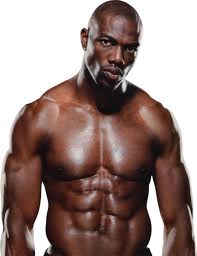

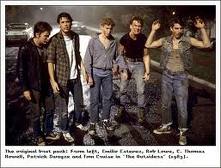




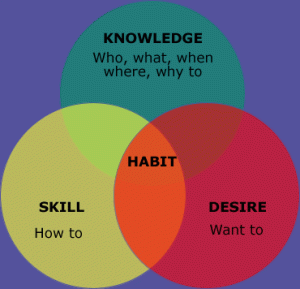

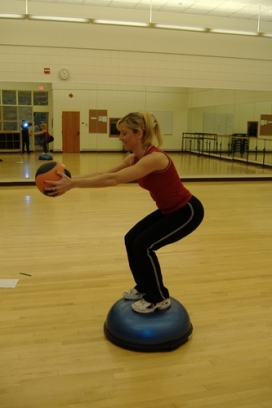
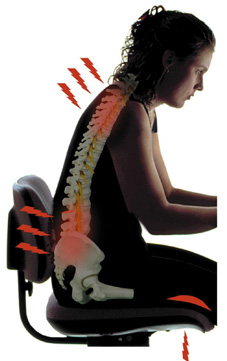
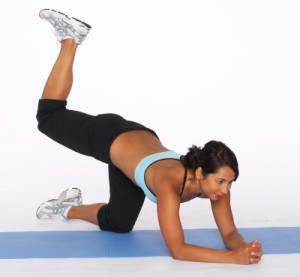
 Not everyone’s time. But if you are trying to optimize the hour or a little over an hour you spend at the gym, you are wasting your time doing exercises that target a specific body part. I’m not going to say that these exercises aren’t “functional” nor am I going to say that you aren’t burning as many calories as you think you are. Both are, in fact, true, but that isn’t why I wholeheartedly hate them. Yes, total body workouts that emphasize compound exercises are more “functional” becuase they “mimic everyday life.” Yes, compound exercises are better because you train the stabalizer muscles, neuromuscular coordination and overall motor control. Yes, you may burn 75-100 more calories per workout if you ditch the machines and circus tricks. But, with as many as four workouts per week, that averages out to only 3500-3600 calories more burned over a two to three month span, so it’s not like you’re getting to your results as fast as many claim.
Not everyone’s time. But if you are trying to optimize the hour or a little over an hour you spend at the gym, you are wasting your time doing exercises that target a specific body part. I’m not going to say that these exercises aren’t “functional” nor am I going to say that you aren’t burning as many calories as you think you are. Both are, in fact, true, but that isn’t why I wholeheartedly hate them. Yes, total body workouts that emphasize compound exercises are more “functional” becuase they “mimic everyday life.” Yes, compound exercises are better because you train the stabalizer muscles, neuromuscular coordination and overall motor control. Yes, you may burn 75-100 more calories per workout if you ditch the machines and circus tricks. But, with as many as four workouts per week, that averages out to only 3500-3600 calories more burned over a two to three month span, so it’s not like you’re getting to your results as fast as many claim.
